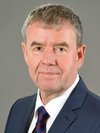The joint DLR/GFZ project is funded by DFG within the priority program 1788 ‘DynamicEarth’ http://www.spp-dynamicearth.de.
This project aims to improve our understanding of the structure and dynamics of the ionosphere/plasmasphere systems taking into account their interaction with other geospheres such as magnetosphere and thermosphere. The focus is on the sophisticated reconstruction of spatial and temporal characteristics of the plasma environment of the Earth mainly utilizing slant GNSS TEC observations from LEO satellites and other complementary data, with special focus on the unique SWARM 3-satellite constellation observations. The results of this study are expected to provide significant contributions to plasmasphere modelling.
The following five key objectives are addressed:
- Development of a mathematically sophisticated method for topside ionosphere & plasmasphere reconstruction primarily based on available LEO-GPS and in-situ data.
- Further development of the already existing CHAMP data-based plasmapause location model for SWARM application.
- Validation and cross-comparisons of the results from objectives 1 and 2, and where appropriate, conclusions how to improve strategies in the sense of objectives 1 and 2.
- Elaboration of approaches for utilizing supplementary information and data to improve the accuracy and spatial resolution of the ionosphere / plasmasphere reconstructions. Especially, integration of the new plasmapause model into the reconstruction procedure.
- Evaluate and demonstrate the potential of the topside ionosphere / plasmasphere reconstructions for space weather studies and for enhanced plasmasphere modelling, taking benefit of the results obtained in other projects being realized in the SPP “DynamicEarth”.
Publications:
Gerzen, T., N. Jakowski, V. Wilken, and M. M. Hoque, (2013): Reconstruction of F2 layer peak electron density based on op-erational vertical total electron content maps, Ann. Geophys., 31, 1241-1249, doi:10.5194/angeo-31-1241-2013.
Gerzen, T., J. Feltens, N. Jakowski, I. Galkin, R. Denton, B. Reinisch and R. Zandbergen (2014): “Validation of plasmasphere electron density reconstructions derived from data on board CHAMP by IMAGE/RPI data”, Adv. Space Res., http://dx.doi.org/10.1016/j.asr.2014.08.005
Heilig, B. and Lühr, H (2013): New plasmapause model derived from CHAMP field-aligned current signatures, Ann. Geophys., 31, 529–539, 2013.
Heise, S., N. Jakowski, A. Wehrenpfennig, Ch. Reigber, H. Lühr, (2002): Sounding of the topside ionosphere/plasmasphere based on GPS measurements from CHAMP: Initial results. Geophys. Res. Lett., 29(14), DOI: 10.1029/2002GL014738
Park J., H. Lühr, N. Jakowski, T. Gerzen, H. Kil, G. Jee, C. Xiong, K.W. Min, M. Noja (2012): A long-lived band of plasma density enhancement at mid-latitudes during the 2003 Halloween magnetic storm, J. Atmos. Sol.-Terr. Phys., 80, pp.100-110, http://dx.doi.org/10.1016/j.jastp.2012.03.009




